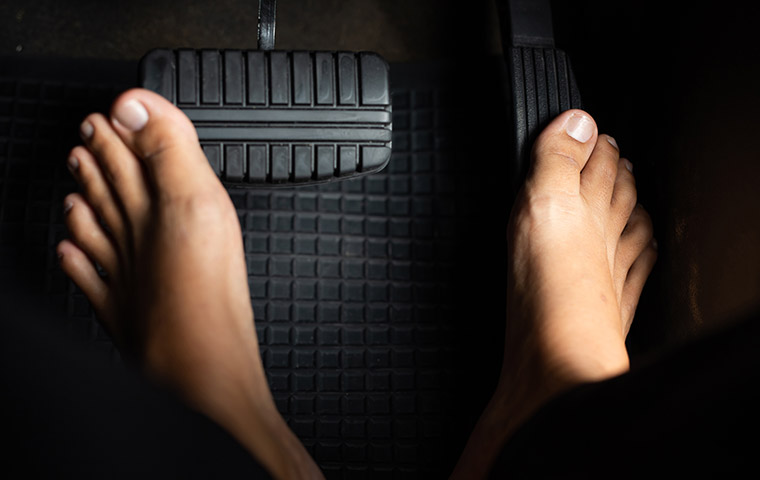Fleet maintenance is one of the top priorities for any fleet manager looking to protect their fleet. A well-maintained vehicle keeps drivers safe, and safe drivers are happy and secure in their jobs with their fleet companies. There are many moving parts to fleet maintenance, such as cleaning, oil changes, repairs, lubrication, adjustments, and inspecting and replacing parts. One of the most critical parts of fleet maintenance is ensuring that a vehicle’s brakes are in order. Brake failure can be catastrophic and immensely dangerous, both to a fleet driver and anyone else who is on the road with them. What are the critical factors in fleet brake maintenance, and how can you ensure that your fleet is safe?
Top Reasons for Truck Brake Failure
Brake failure can happen for many reasons, but fleets should look out for these common culprits. Here are six common reasons that truck brakes fail:
- Imbalance: One or more brake exerts more or less force than the others. This often happens when you have mismatched parts or an error in the pneumatic system.
- Hose Chafing and Kinking: This is a top violation in inspections for truckers. Over 2,500 vehicles were affected in just one year.
- Overloaded Trailers: If your truck is carrying a load that is too heavy, the braking distance required for the vehicle becomes too far. This puts strain on your braking system, which can lead to failure.
- Overheating: This can be due to brake imbalance or not properly braking when going downhill. It dramatically reduces the longevity of your brakes.
- Lubrication: Lubricating brakes is especially crucial after a harsh winter. Lubricate your caliper pins, mounting tabs, clips, and brake backsides.
- Suspension: This issue is similar to brake imbalance. A faulty suspension system can put unnecessary stress on your brakes.
Tips for Brake Maintenance
- Inspect brakes using the FMCSA Brake Inspection Checklist. This list helps you check for issues like chaffing, worn or cracked brake pads, damaged components, or cracked brake pads.
- Be sure to complete Driver-Vehicle Inspection Reports (DVIRs). You should be completing these anyway to meet federal regulations, but completing DVIRs helps ensure that you are checking the status of your brakes every day, along with other vehicle maintenance needs
- If the pedal in your vehicles goes all the way to the floor, it is time to get the vehicle looked at immediately. Do not allow anyone to drive the vehicle until it has been inspected.
- Always ensure your parking brakes are in working order. The vehicle should not be able to move when the parking brake is engaged.
- If your disc brakes make noises like screeching or squealing, you can apply brake lube to the pads. If you still hear the noise after application, you may need to replace the brake pads. If the noise still continues, you can try lubricating the calipers or replacing them. A grinding noise means that the rotors are likely damaged.
- Drum brakes may over-adjust, wearing out the brake lining, making noise, and causing the rear wheels to lock up. You can tell if they need replacing when the pedal goes down further than normal.
- Ensure your drivers engage in safe driving habits. You can monitor this with telematics and dash cams. Driving at safe speeds, maintaining reasonable following distances, and braking in time ensures that there isn’t any unnecessary wear and tear on your brakes.
- Ask your drivers to keep an eye out for problems with the brakes. They are the ones driving the vehicles, so they are most likely to notice strange noises or issues with the pedals.
Tips for Hydraulic Brake Maintenance
Hydraulic brakes are unlike air brakes, and therefore endure different problems than their counterparts. However, there are still ways to find problems with hydraulic brakes, and we will break those down below.
- Determine the number of antilock stops with a scan tool. When hydraulic brakes begin to wear down, they require less pressure to bring the vehicle to a stop. Therefore, drivers will often accidentally apply too much pressure to the brakes, causing an antilock stop.
- Inspect brake shoes and pads for wear. Irregular wear from side to side can indicate loose or damaged wheel bearings. These wheel bearings can allow the linings to contact the drum or rotor at an angle, which causes increased wear on one side of the surface.
- Inspect springs, cylinders, adjusters, backing plates, and all other hardware for wear and damage. These tend to be overlooked when replacing brake pads, although they suffer wear like the rest of the brake.
- Of course, be sure to keep hydraulic brakes clean and lubricated during the winter months, as lubricant can get washed off from rain and snow, and dirt can get caked on from mud and sleet.
Conclusion
Preventative maintenance is a must when it comes to keeping your fleet safe. Nobody wants to see their fleet drivers get into an accident. Not only is it dangerous, but it hurts the business immensely. These maintenance tips will help protect your vehicles’ brakes from unnecessary stress. Follow Azuga’s blog for more tips and technology that will help keep your vehicles going and your fleet drivers safe.








